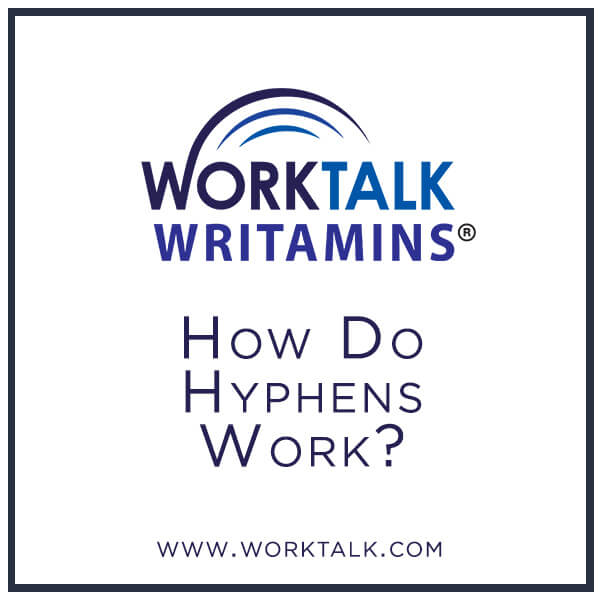
Driving by a bank one day, I saw a sign that read, “No Point Home Equity Loans”. No point. Pointless. Just borrow a ton of money and spend it on video games. But that is not what the bank meant. They meant “No-Point Home Equity Loans”. Sound financial thinking. Good loan terms. What a difference a hyphen makes.
Hyphens glue words together. They tell the reader how the words are connected. Often, they create adjectives and nouns, which means that they describe and name things. The adjective answers the question, What kind of? If I say tall, blonde girl, I have one noun (girl) and two adjectives (tall, blonde). What kind of girl? A tall, blonde girl. But if I say man-made materials, I have one noun (materials) and one adjective (man-made). The hyphen combines man and made into one new word, man-made. These multi-word adjectives are called compound adjectives.
The hyphen can impact the meaning of a phrase. For example, a man-eating shark is a shark having dinner. A man eating shark is a man having dinner.
- Three-hundred-year-old trees represents an unknown number of trees that are 300 years old.
- Three hundred-year-old trees are three trees that are 100 years old.
- Three hundred year-old trees are 300 trees that are one year old.
Note that when writing compound numbers, you use a hyphen.
Here are some examples from the business world:
- The board-approved findings are enclosed. What kind of findings? Board-approved
- Please refer to the above-mentioned document. What kind of document? Above-mentioned
- Tax-free municipal bonds can be a good investment. What kind of bonds? Tax-free
In all these cases, the hyphen combines multiple words into single adjectives.
Hyphens also create nouns such as set-up, e-mail, follow-up, and others. Note that these words, and many others, go through a period of being hyphenated and may evolve so that they become a single word. When I wrote Get to the Pointin 2001, Random House and I chose to hyphenate the word e-mail. In 2010, when the second edition was published, we went through the manuscript and turned e-mail into email. Today, both e-mail and email are acceptable.
The key to using hyphens is the same as the key to most other punctuation questions: Do what makes your meaning clear to your reader. If two words function as one word, hyphenate them so your reader can comprehend the connection at a glance.
